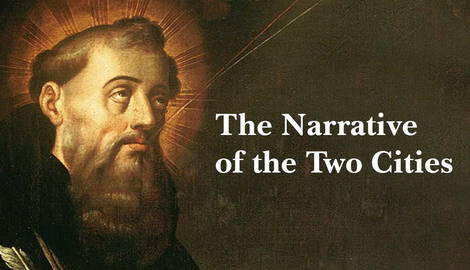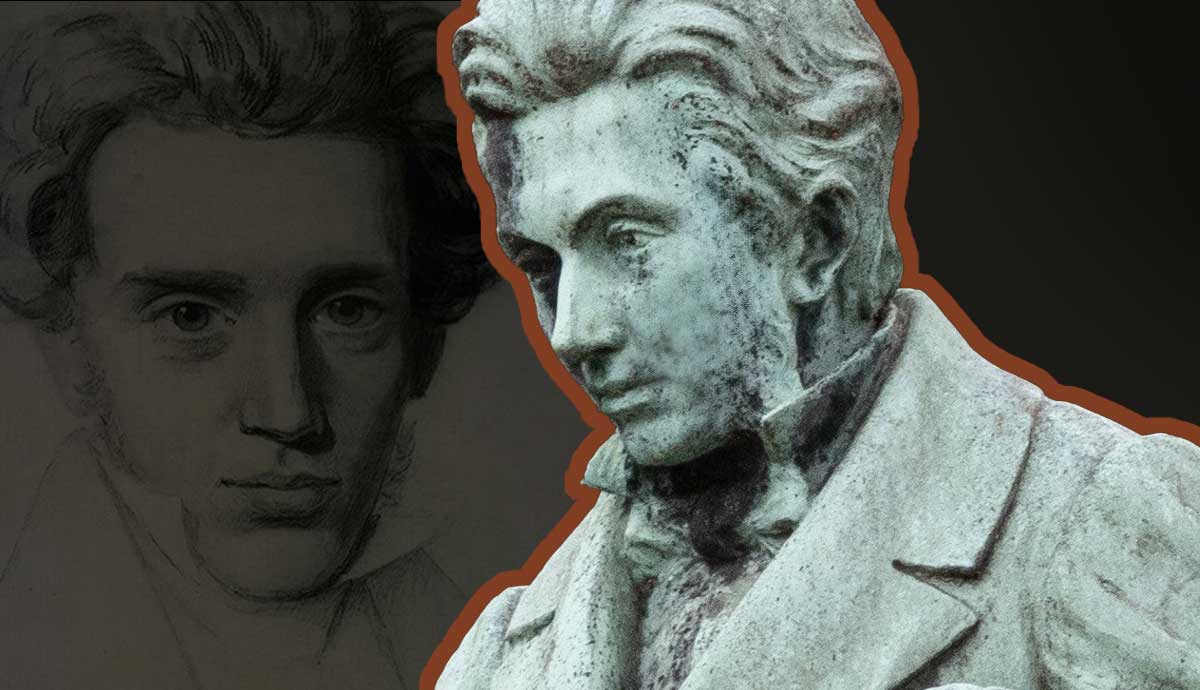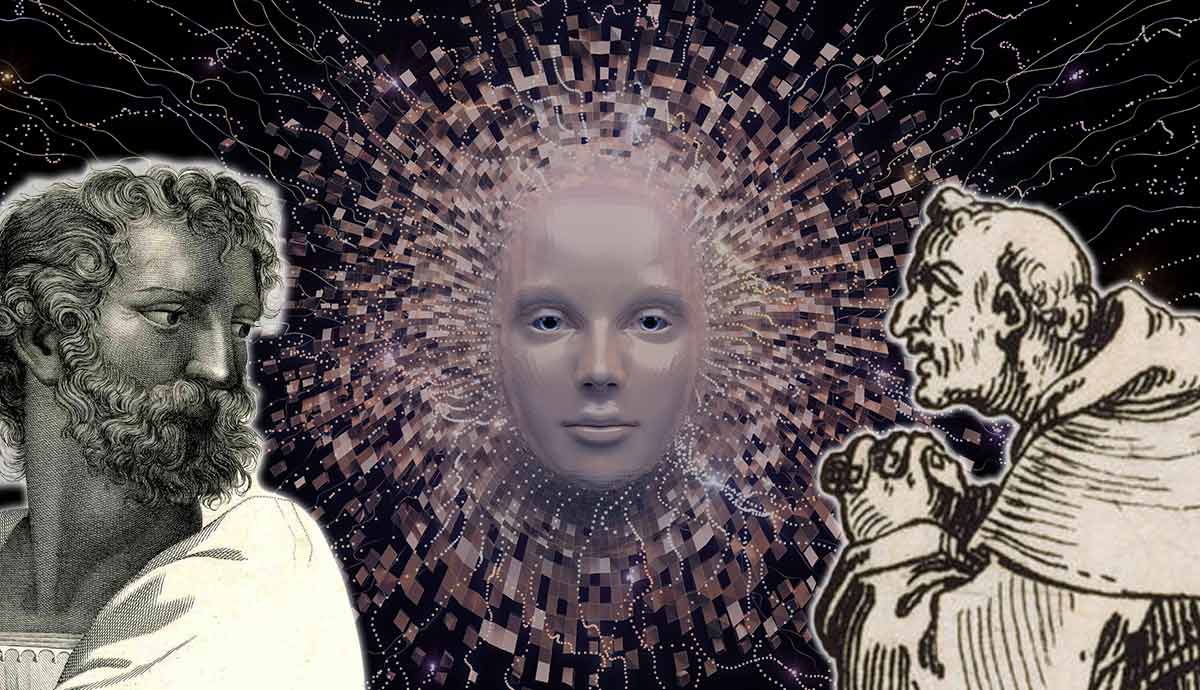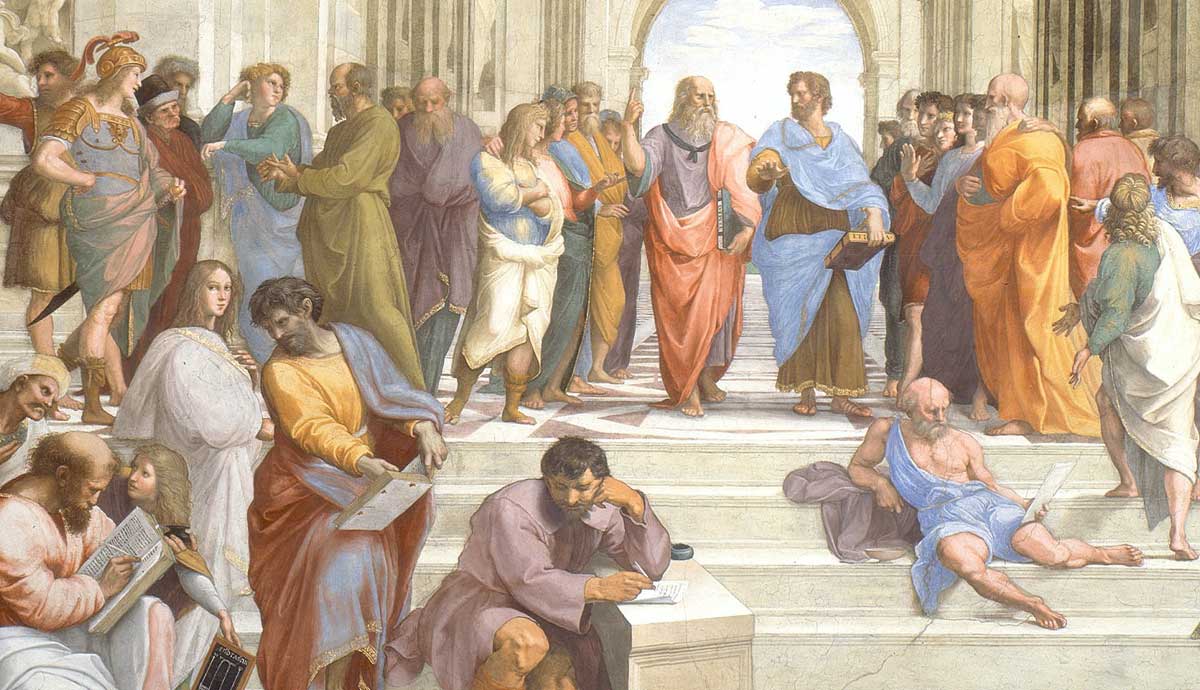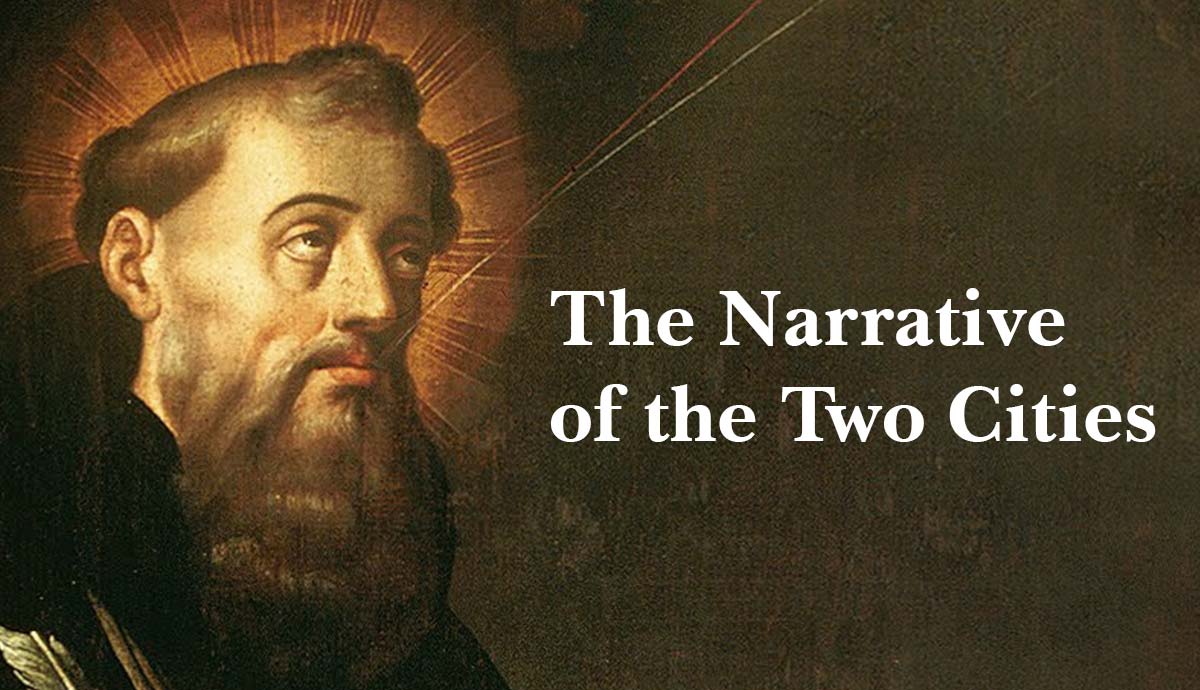
Saint Augustine’s final and most monumental work was his City of God. It spans over one thousand pages across twenty books. He spent thirteen years writing this from age fifty-nine to seventy-two. While it is considered by some to be the first formalized “philosophy of history,” though there is some disagreement about the role this work plays in our philosophical history. What is undebatable about this work is his fundamental goal to defend the then-burgeoning Christianity.
Who Was Saint Augustine?

Saint Augustine is one of the most important writers in the history of Christianity. It is impossible to fully understand the ensuing Medieval Period without a proper study of Saint Augustine. Along with his City of God, he is equally known for his Confessions, which is perhaps the first autobiography in the West.
Saint Augustine was both born and died in North Africa. He was raised in a mixed family religiously; his mother was a devout Christian, but his father was not religious. It was a long and arduous journey for him to become the devout Christian he would eventually become.
He was sent to Carthage, the nearest big city, at age sixteen, to foster his precocious rhetorical skills. It was a bustling and tempting place for such a young man, and he fell prey to temptations all too frequently. He had a mistress during this time, with whom he had an illegitimate child. To tame his lustful desires, he tried a few extreme measures, such as getting involved in Manicheanism, once a vibrant religion that emphasized a more ascetic way of life.
Saint Augustine’s Work in Action

Along with his long search for spiritual fulfillment, he also yearned for philosophical fulfillment. He dove deep into studies on skepticism and Neoplatonism, but Christianity would finally provide fulfillment. He was baptized in 387 CE and became the Bishop of Hippo in 396 CE, now Tunisia.
Thus, at the end of his life, he was to witness the first stages of the fall of the once-great Roman Empire. The city of Rome fell in 410, which was met with great despair by many, leading them to question how this could have happened.
Many blamed the “pagan Christians,” but Saint Augustine would defend Christianity in his monumental City of God. One of his main arguments was that it was not Christianity and Christians that caused the fall of Rome (and eventually the Western part of the Roman Empire). Still, it was because the Romans did not convert soon enough to Christianity. He argued that many of the Roman ethics and ideals were not so different from those of the Christians, and had they converted sooner, this would not have happened.
The Narrative of the Two Cities

In this work, the narrative speaks of the dualistic reality of two cities, the City of God and the City of the World. As noted, this is a very long book, spanning about one thousand pages, where he presents a narrative of human history unfolding a contrast between these two cities. As also noted, the main goal was to defend Christianity in this narrative. It is also arguably our first formalized speculative philosophy of history that argues for a purpose and meaning to human history.
The Ancient thinkers tended to see history as something cyclical, but Saint Augustine saw it as linear, as a teleological narrative all dictated and known by God. There was a purpose, therefore, and the all-knowing and all-good God was the author. History is a moral drama played out by humans in a struggle between those in the kingdom of the City of the World and those in the kingdom of the City of God. These completely opposing cities were established upon the fall of humanity from grace. We are all dedicated to one or the other, depending on our love for God or lack thereof.

The City of the World, or what is also known as the City of Man, represents flesh, egoism, and a possible fall to the devil. In this work, he traces examples through various narratives.
For example, Cain, who slaughters Abel, and Romulus, who slaughters Remus, represent people from the City of the World, too driven by self-love and attempts to bring glory to one’s self. An emblematic example of a City of the World is Babylon because it was full of pagans.
The City of God

The City of God is the supreme city, the opposite of the City of the World. This city represents the spirit of God and those who, through their love and devotion to God, will join God’s good city. Here is where glory is not given to the self but given by God. This is the city where one can see the work of God, where there is harmony and beauty. This is where one avoids evil and enjoys the supreme good, which can only be achieved by one’s faith and grace from God. Jerusalem is the emblematic example of the City of God.
So here, along with his aforementioned shift away from a cyclical view of history to a linear one, he is also making a political shift away from ancient emphases on the civic participation of human beings in their communities to creating communities of faithful believers, where religious dictates reign supreme. Saint Augustine saw the state as a necessary evil, really a result of the fall of humankind, but the supreme state is that of God. We should seek to harmonize as much as we can (though we cannot fully) the City of the World with the City of God.
This is a historically monumental shift: he argues for the supreme reign of the Church over the state, which would remain the dominant view until the seeds would be planted to question the different divine rights beginning in the Renaissance and would later become especially prominent during the age of revolutions. The Church would remain supreme during the Medieval Period in the West. This narrative, he argues, is justified because God is good and God would never deceive us (and here there is also an early precursor to Descartes’s philosophy), so God is the ultimate source for all for justice, for grace, for the proper unfolding of history, etcetera.
Saint Augustine: A Philosopher of History

As noted, with this work, the City of God, Saint Augustine, arguably presents us with the first formalized speculative philosophy of history—at least for what we have on record. This teleological and purposeful view is very comforting for the religious; if God is the author of the moral drama that is the unfolding of human history, everything that happens is ultimately necessary and good because God is all good. History is not just random, purposeless events: they are all the result of God’s good doing.
This position, however, does not come without critiques. For one, what does this mean for human free will? If God sees all of human history all at once as outside of our conception of time and is the orchestrator behind everything, then can we be free? Saint Augustine attempts to resolve this critique by arguing that we have free choice, it is just that God already knows what we will decide. The counter is raised that this does not resolve that quandary, and this would continue to be a central inquiry in the history of philosophy that ensued.
Another objection raised against his view is that, without being able to resolve human free will with God’s providence, we humans are left without agency. If we have no agency, then there is no point in trying to change the course of events because we have no power to do so. For instance, questions of social justice, therefore, are put to the wayside.
But it should be reminded here that not only is no philosopher free of critiques, but these are nonetheless very important questions that would continue to be explored and that deeply enriched not only the history of philosophy but also the history of Christian theology.
The Importance of The City of God

In much of the history of philosophy, the most important inquiries are raised rather than the answers proposed. Saint Augustine’s City of God was one of those important works. In his defense of the burgeoning Christianity, he tried to reconcile and harmonize his religious and philosophical views; faith and reason—but he ultimately placed religion and faith first, which would become the dominant position and remain so throughout the rest of the Medieval period in the West.
His work continued to be discussed as part of the conversation about the history of philosophy, especially through the Renaissance and Reformation. Despite his inclusion in the history of philosophy textbooks, some question how much of a “philosopher” he was. Whether he is more of a rhetorician, theologian, or philosopher may not ultimately be as relevant as it seems if what is most important is weighing his contribution to the discussion that ensued.
Moreover, he probably would have been just fine with us questioning his role as a philosopher, as he died a Bishop, and Christianity reigned supreme in everything for him; on this, he was uncompromising.
